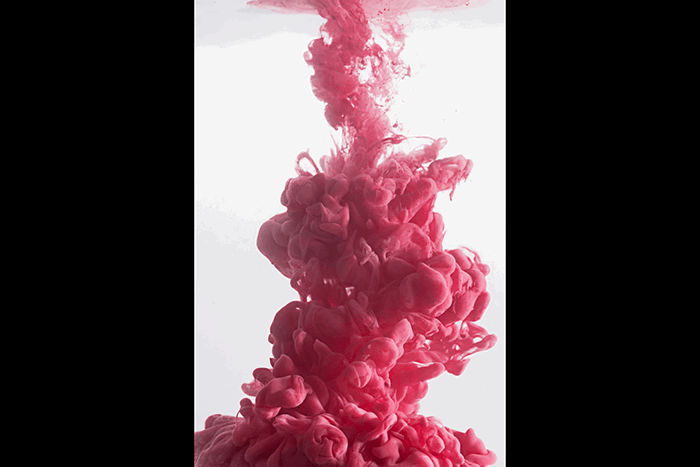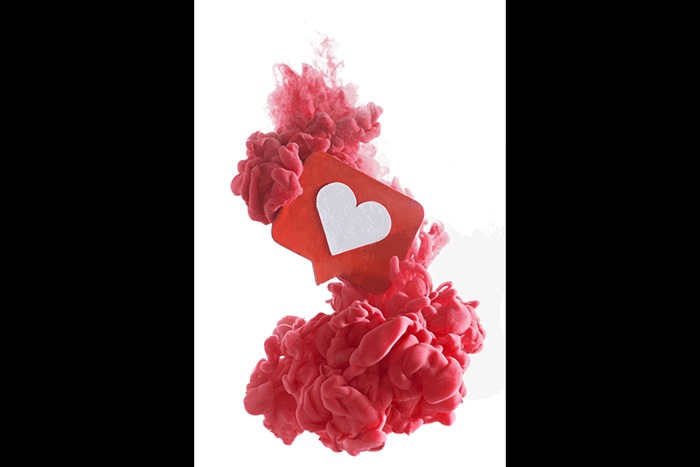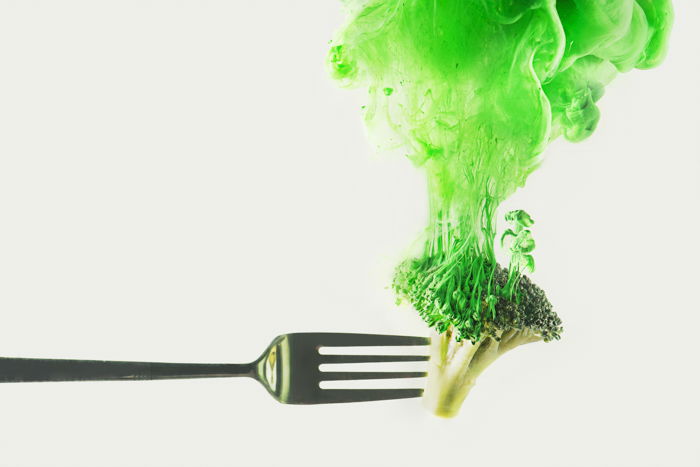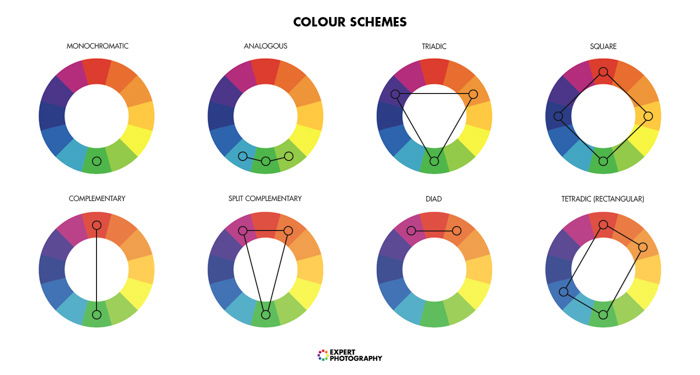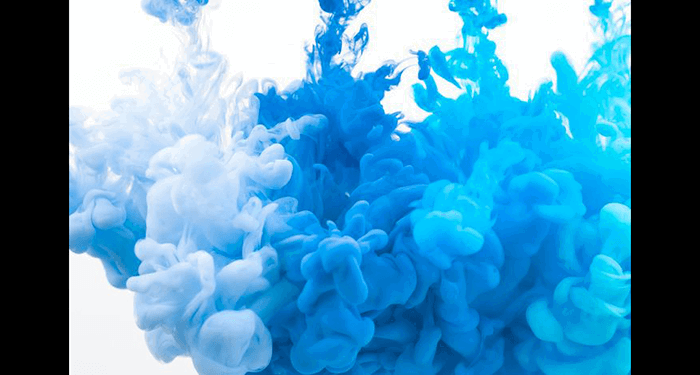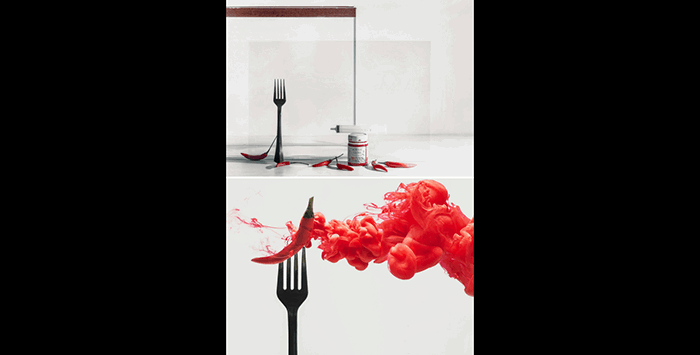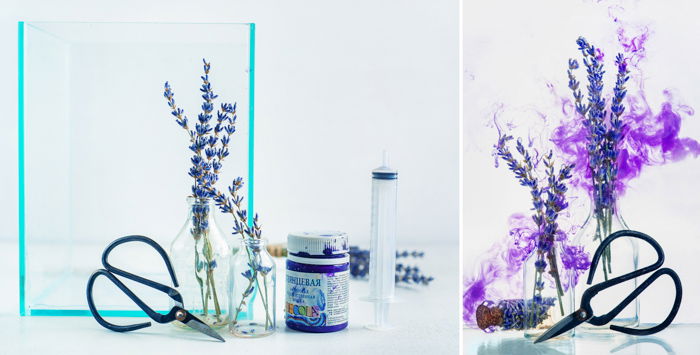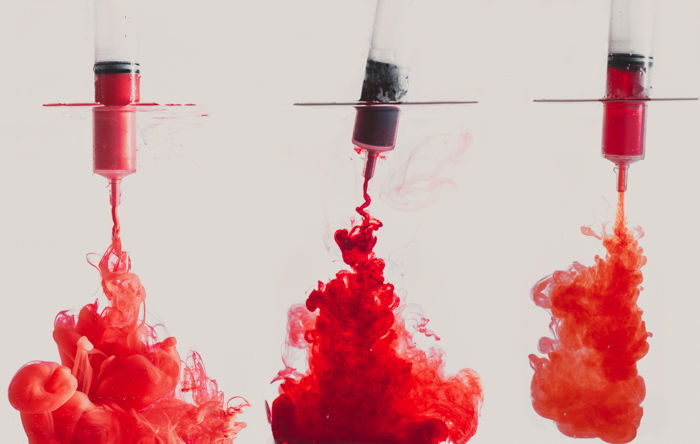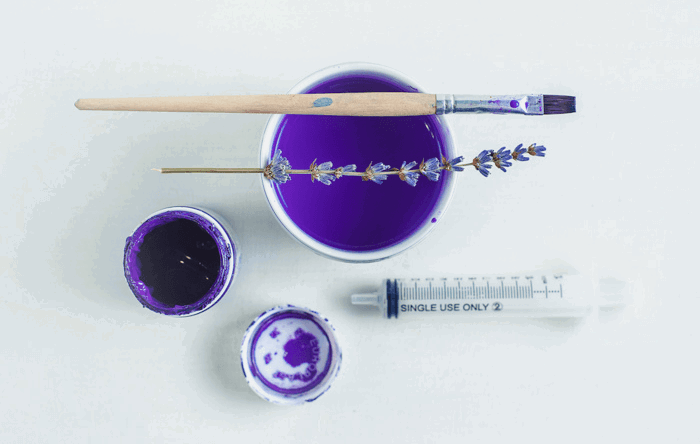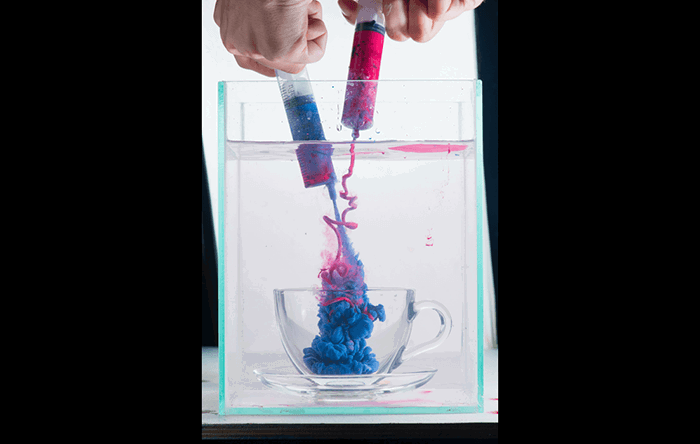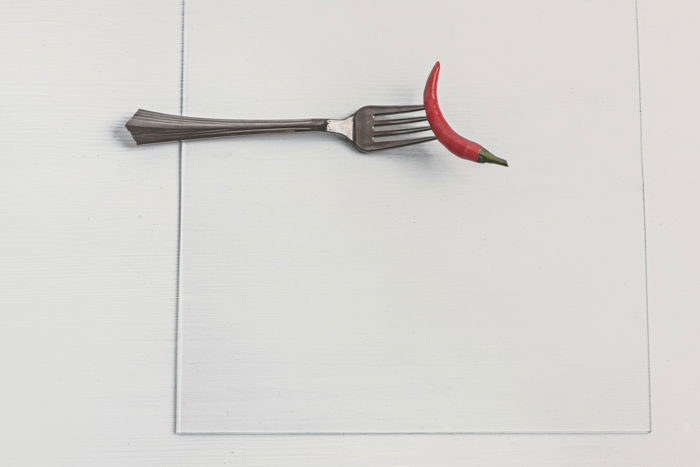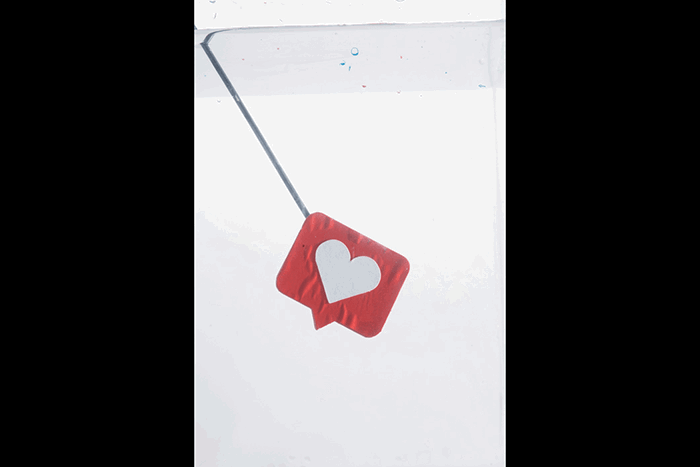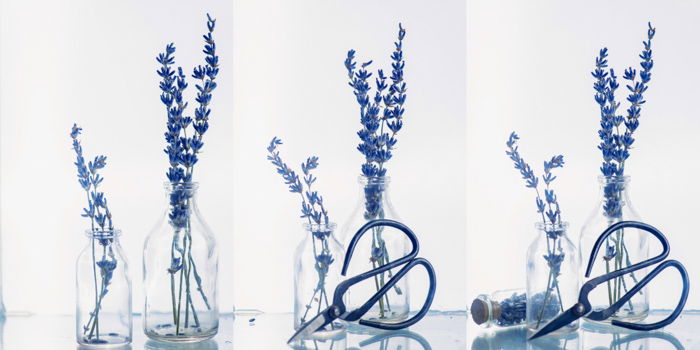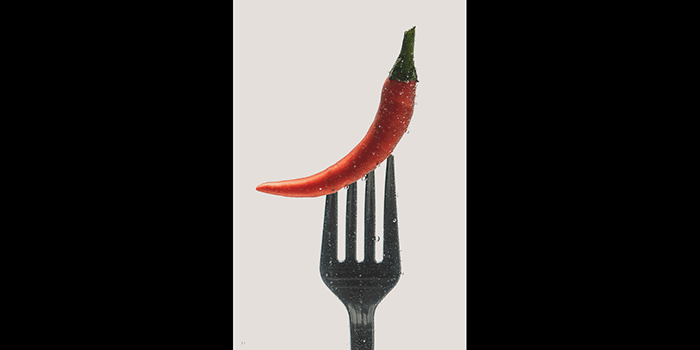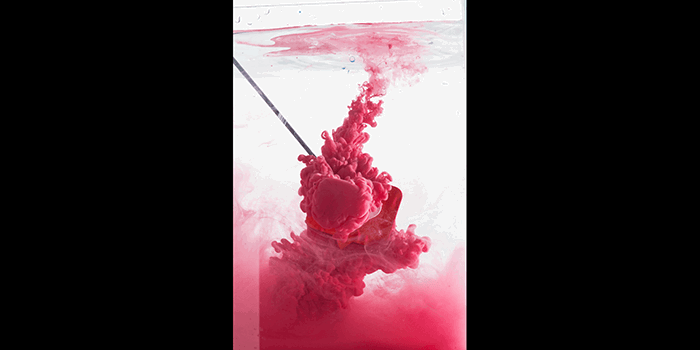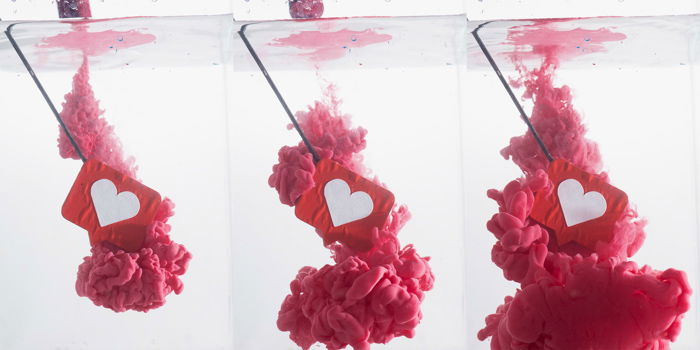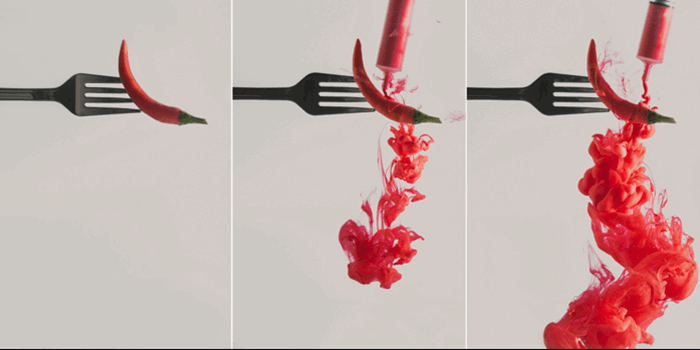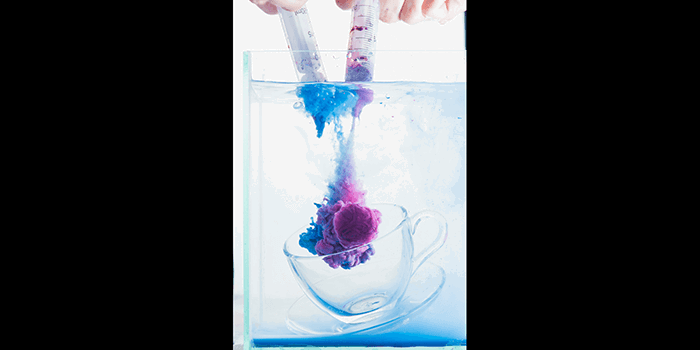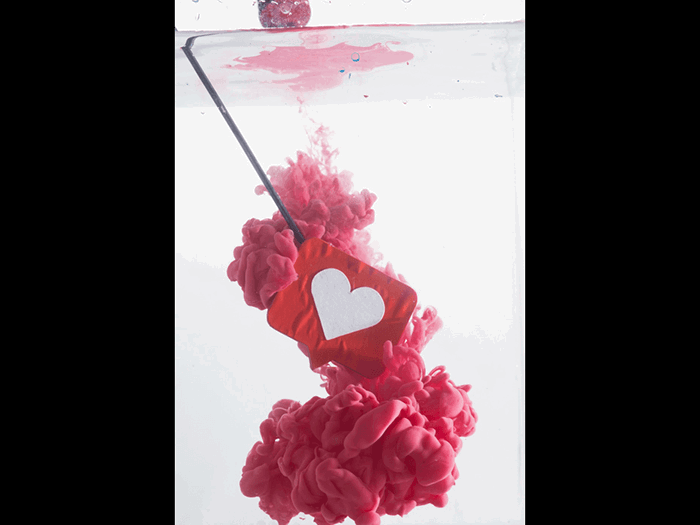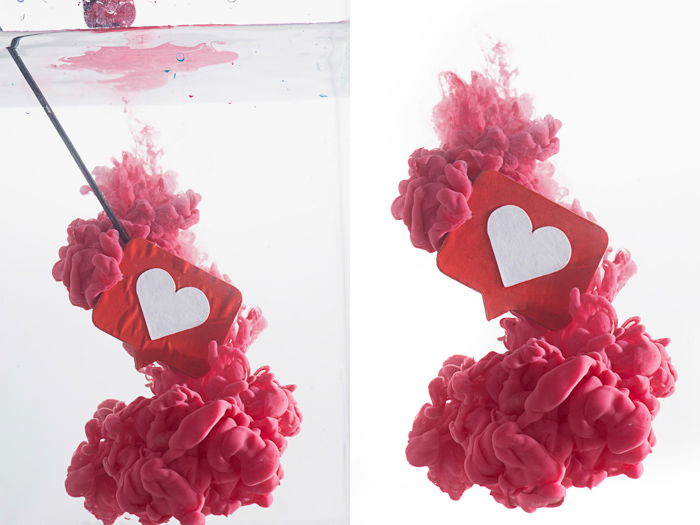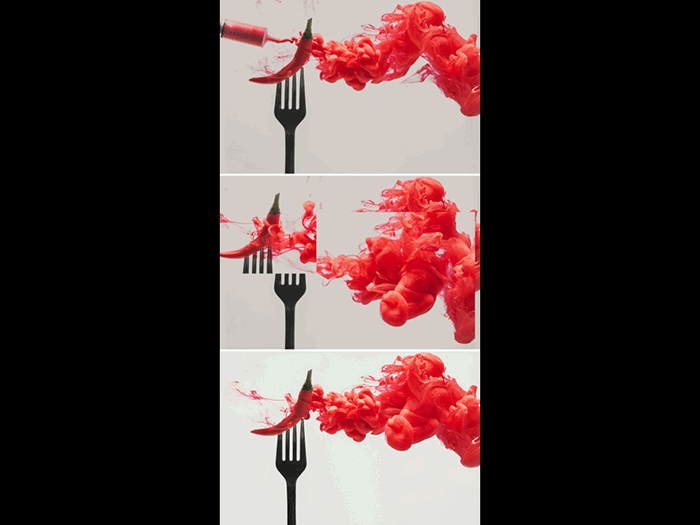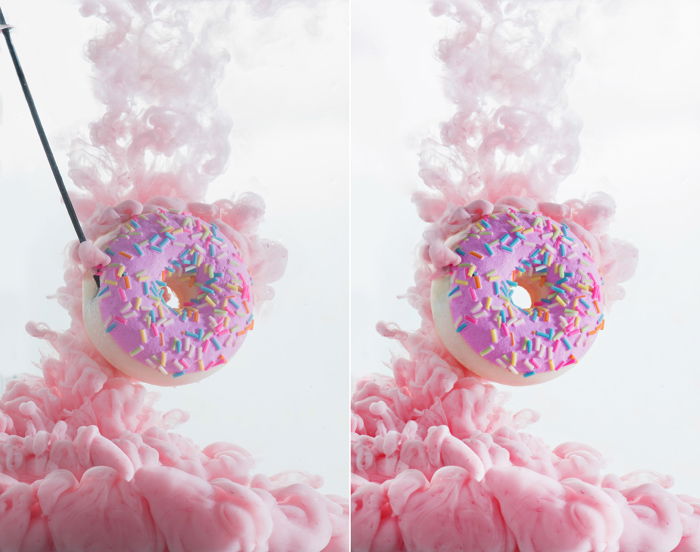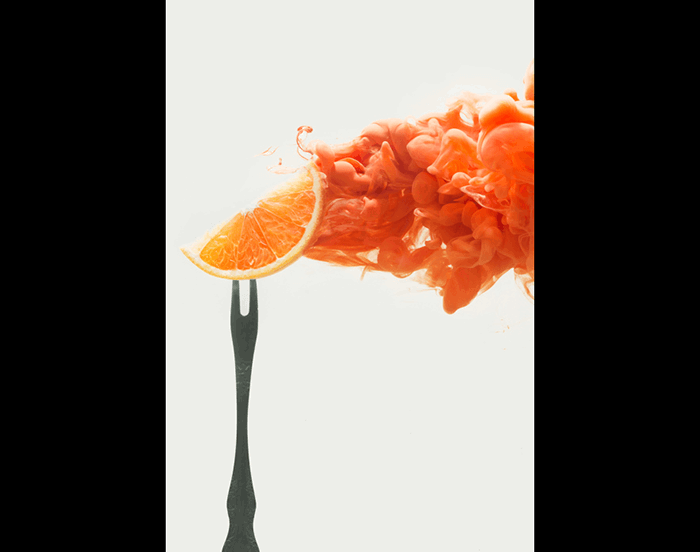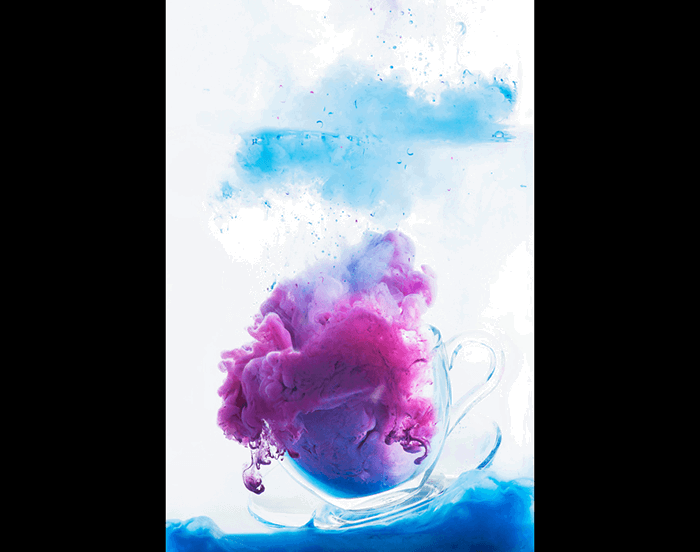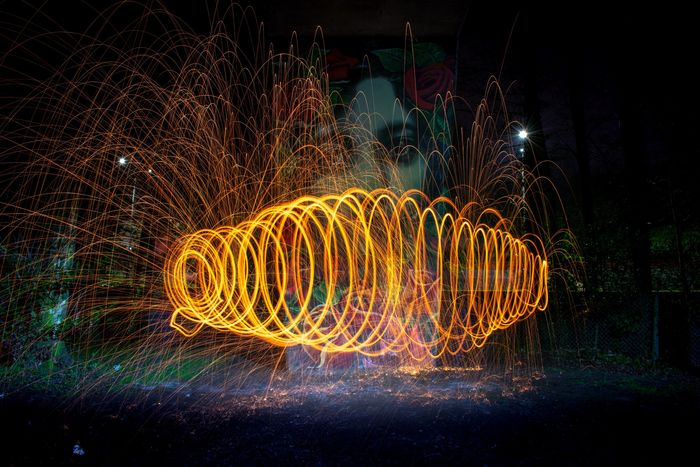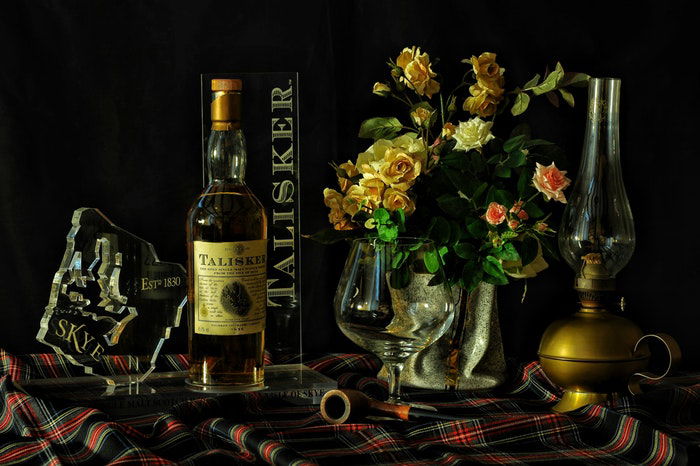How to Use Paint in Water Technique for Cool Liquid Photos
Welcome to the colorful world of paint in water photography! We show how to create amazing paint shapes underwater and improve your creative still-life photography. Is it a 3D model? Is it a combination of two completely different images?
These were the comments I got after posting my Desintegrated series shots. It’s where a tomato, chili pepper, and broccoli seem to vaporize into a colorful cloud! And no, it’s not 3D or elaborate post-processing. We’ll make these effects in-camera.
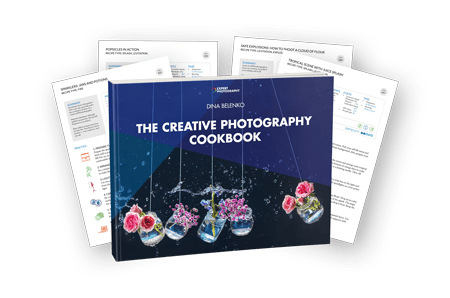
- Explore unlimited creative inspiration for captivating scenes.
- Master fun techniques with balance, levitation, steam, and more.
- Simple setups at home with basic gear for stunning results.
Pick a Subject for Paint in Water Photography
First, imagine a picture you want to take and pick an object to be the “hero” of your shot. You can also only shoot abstract “clouds” of paint. That’s cool, too, especially if you combine two or three colors in one “cloud.”
But, with a specific recognizable object, you can tell a story with your photo. Your shot becomes not only a cool wallpaper but a work of art. For example, I picked a tiny heart icon made of thick paper.
Abstract clouds are fine, but clouds with a story are even better! You can put an amazing cloud of paint behind a perfume bottle. Or pour some paint inside a martini glass and make a “cloud cocktail.”
You can pick some fruits or vegetables and dissolve them into colorful clouds. You could also photograph several objects simultaneously and make a fast-dissolving salad. Flowers are also a great choice for this trick.
Check the Color Wheel Before Mixing Colors
It’s very tempting to use complementary colors in abstract liquid photography. Getting an image with a high color contrast is a good idea, correct? Well, not when you’re dealing with real paint.
If you mix red with green in a fish tank, you get an unpleasant brownish mess. The same goes for purple and yellow or the popular combination of orange and blue.
Pick colors that stay on the same quarter (or at least half) of the wheel and not directly opposite each other. Instead, use colors that are a bit closer to each other but still have some color contrast. Blue and hot pink produce a fantastic shade of lilac.
Warm yellow and colder shades of green can look very fresh. And orange with red can be a fiery combination! I recommend thinking about a rainbow. You’re on the right path if you imagine your color combination creating a nice gradient inside a rainbow!
What Props Do You Need?
A Small Fish Tank
The first thing we need is a small fish tank. I can’t stress enough that it should be very small—about one gallon (four liters) should be enough.
It’s important because, after every iteration, we need to clean and refill the fish tank and start again. It’s much easier to lift it and carry it to the bath or sink without the risk of dropping it or exhausting yourself.
I made my first experiments in a 15-liter fish tank. I consider myself a rather fit person. But carrying around 15 liters of water in a slippery glass box was hard! This fish tank was too big.
After that, I bought a much smaller fish tank (pictured below). It worked like a dream!
Acrylic Paint Mixture
Another important prop is the paint. Keep in mind that different types of paint behave differently in water. Acrylic paint is much denser than water. It holds together as it drifts through the tank and forms pleasing opaque clouds.
Ink (spirit-based) is light, transparent, and hard to control. It tends to escape from the syringe before you start to push it.
Food dye is transparent, not as bright as ink, and has the same density as water. I favor acrylic paint’s fantastic look and natural interaction with solid objects.
I shot dissolving tomatoes or chili peppers. If they dissolved in water, I imagined they would produce dense transparent smoke like acrylic paint.
We must make some modifications before we’re ready to form a cloud. First, use some water to make acrylic paint a bit less dense so you can pour it easier. But don’t add too much water! A too-watery solution doesn’t produce the sculpture-like shapes we want to see.
Also, mix the color to match the tone of your object. It doesn’t have to be 100% correct, but it should be close enough. I mixed some lavender paint to match the color tone of my flowers (pictured below).
I like using syringes without needles to release the paint. It gives me more control. If you like using something else (even a teacup), that’s okay too. In the third image below, I made a mistake, and you can see that the pink paint is too thick.
Supports for the Main Object
Perhaps you’re not only shooting abstract paint clouds but have an object to play the leading role. If so, you need something to fix the object in its place.
The entire construction should be steady and motionless. The only prop that moves is the paint. Keep everything in its place, and your shot will go smoothly. There are several solutions to do this:
- Use special clamps if you have them.
- Use a sheet of glass or clear plastic and glue. For my shot of the chili pepper, I glued a fork to a sheet of glass. If the glass is clean and unscratched, it won’t be visible in the water.
- You can use a combination of a stick, a glue gun, and binder clamps. I glued the paper heart icon (pictured below) to a knitting needle and fixed it with a clamp in a position I wanted
Whatever you do, don’t use threads and strings unless you can also attach them at the bottom of the fish tank and steady the construction. They react to every motion in the water, making the object unstable.
What Photography Gear Do You Need?
The gear we need is simple—a camera, a tripod, and any light source suitable for shooting splashes. In my case, I used two Nikon SB-910 Speedlights. On low power, they have a flash duration short enough to freeze the liquid in motion.
You can use almost any lens, but a macro lens is the best choice. A remote release is helpful, too (but it is only for convenience, not a requirement). Using a tripod is extremely important. It keeps your camera still and secure for sharper shots.
You can focus manually, arrange your composition, and leave your camera in place, watching the beauty of mixing colors. Your camera is ready for a perfect composition with each shot.
Best Flashguns for Paint in Water Photography
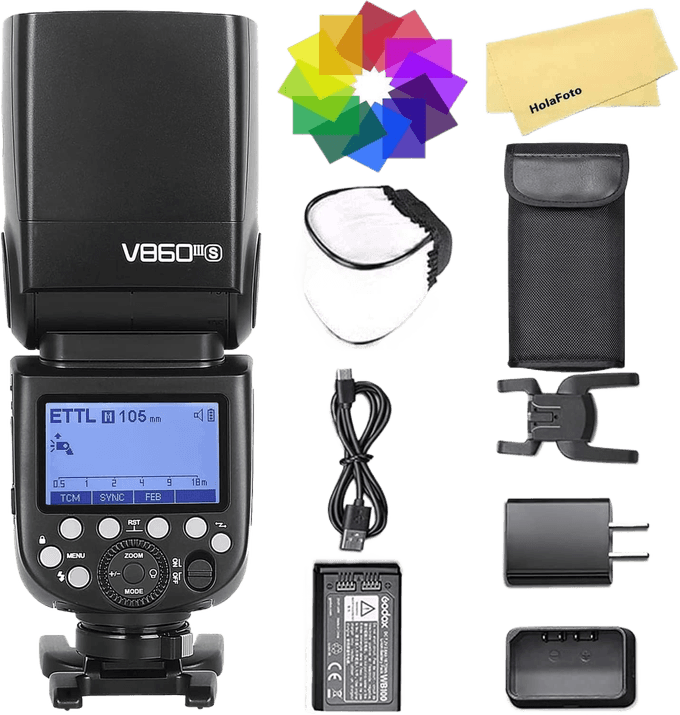
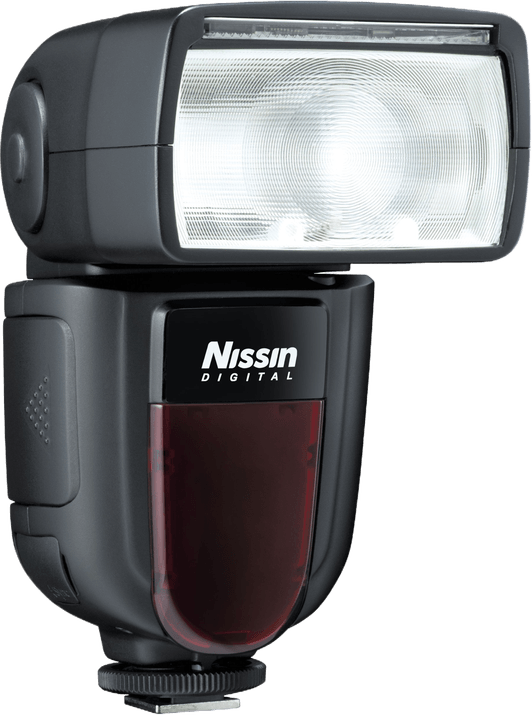
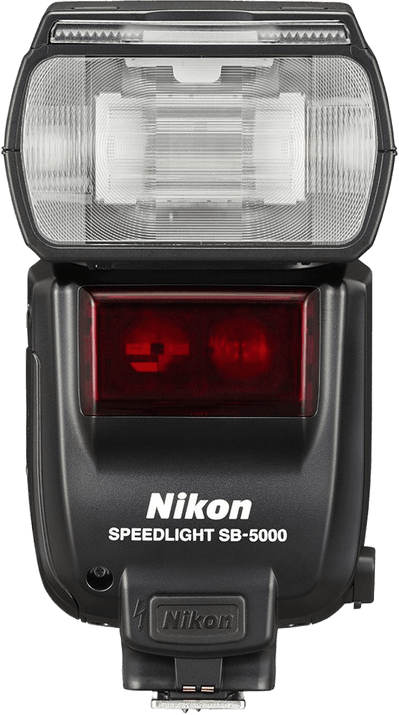
Setting up the Shot
Arrange the Scene
Fix everything in place. As I said, I glued my heart icon to a knitting needle, put it in the tank, and fixed it with a special clamp. In the case of lavender, I glued everything to the bottom of the tank. Make sure your objects are steady. Then, fill the fish tank with water.
Beware of any bubbles! They tend to emerge on your objects and the walls of the fish tank. To remove them, use a small squeegee, a wooden spoon, or even a simple brush. I removed bubbles from the chili on the fork below.
Mind the Orientation for More Exciting Results
You may want to turn your final shots upside down. Sometimes, a cloud of color running from left to right or from bottom to top makes the final shot look more interesting.
You may want to take a vertical photo later rotated 90 degrees counterclockwise. In that case, remember that we want to pour paint from the top to the bottom. Set your camera on a tripod, considering any future rotation when editing.
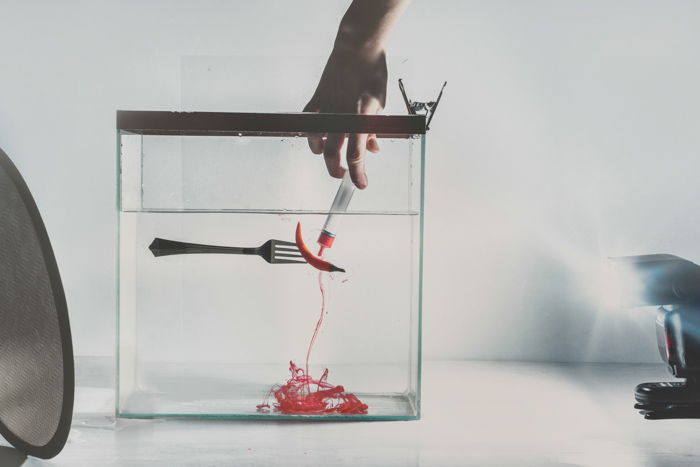
In the final shot, the paint will appear to go from the left to the right of the fork.
Set Up the Lights
Light the scene with two speedlights set on low power. The power setting from 1/8 down to 1/128 provides a short pulse to freeze the liquid’s motion.
Place one speedlight inside a small strip box right behind a fish tank. It works both as a key light and as a background. Another is on the right side of a fish tank. Also, white paper on the left front side works as a reflector to soften shadows.
I use wireless triggers on each speedlight and a transmitter on my camera’s hot shoe. One of my transmitters works as a remote release, which is convenient.
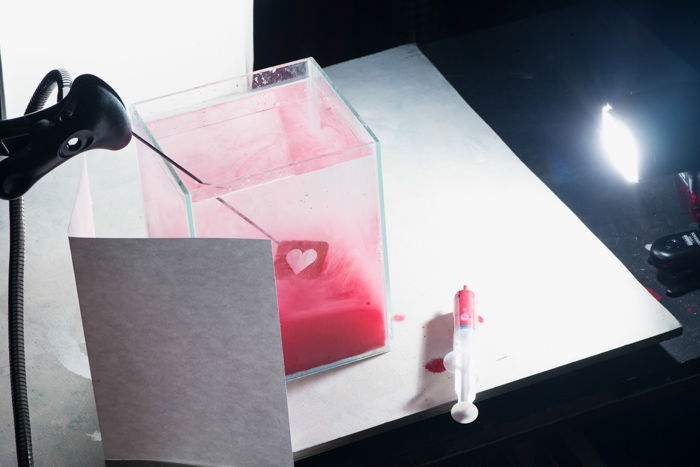
Two lights and a sheet of paper working as a reflector
Pre-Focus Before Shooting
Sometimes, autofocus doesn’t work well, especially in continuous (burst) mode. It slows things down and tends to make mistakes. Switch to manual mode and put the camera on the tripod for a sharp image.
Focus on your main object. Or, if you’re shooting abstract shapes of paint, take any random item and hold it in the middle of the tank. Then, pre-focus and switch to manual focus to lock off the focus point.
Adjust Camera Settings
Set your camera to burst mode to make several shots in a row. Using natural light, set the fastest shutter speed possible to freeze the liquid’s motion.
If you’re working with speedlights, your shutter speed depends on the flash duration. So, set the synchronization shutter speed and adjust the aperture to get a well-exposed image. And make a final check to ensure all objects are affixed.
Pour the Paint and Take the Shots
Next, pour some paint a little behind your object. Make the paint touch the object but not get in front of it. Don’t let the paint hide the main object because it creates a mess (see the first image below).
Pour the acrylic behind or to the side of your object, and be careful with pressure. Also, pour very close to the water surface. If you drop paint from high up, you make it move faster. It might also impact the water more, making the process more difficult.
Take a sequence of shots as the paint makes beautiful clouds. After each iteration, we need to clean and refill the tank. Try using two colors to make the final images even more interesting!
How to Edit Your Photos
Choose your best shot and touch it up a bit. In my case, I needed to remove bubbles on my heart icon because the water damaged it. It wasn’t a big deal. After a few minutes of working with the Clone Stamp tool in Photoshop, I fixed it.
Also, you can add some details from other iterations. For example, I replaced the syringe on the left side of my chili pepper with some swirls of paint. Adjust colors and contrast and delete all random dust particles and scratches.
You can also do more advanced edits. In the third image below, I combined two pictures to mask the syringe
Voila! You have a colorful shot with clouds of paint! Now, try it with different objects or arrange a more complicated scene. Here are some more examples of what you can do.
Conclusion: Paint in Water Photography
We hope you can use this tutorial as a starting point for fantastic, colorful photos. It’s your turn now! Feel free to share your paint-in-water photos in the comments.
Check out The Creative Photography Cookbook for more fantastic ideas!

- Explore unlimited creative inspiration for captivating scenes.
- Master fun techniques with balance, levitation, steam, and more.
- Simple setups at home with basic gear for stunning results.
